Posts Tagged ‘1p’
The UK’s NEW Coinage
The coins that we use every day are changing.
From the 1p to the £2, eight new coins will soon be entering our pockets and our piggy banks.
So, as we welcome the new era of King Charles III, both the ‘heads’ and ‘tails’ of our circulating coins will have brand new designs.
Read on to unveil The Royal Mint’s brand-new designs, learn about the history of Definitive coins and why this is the biggest change for British coins in 15 years…
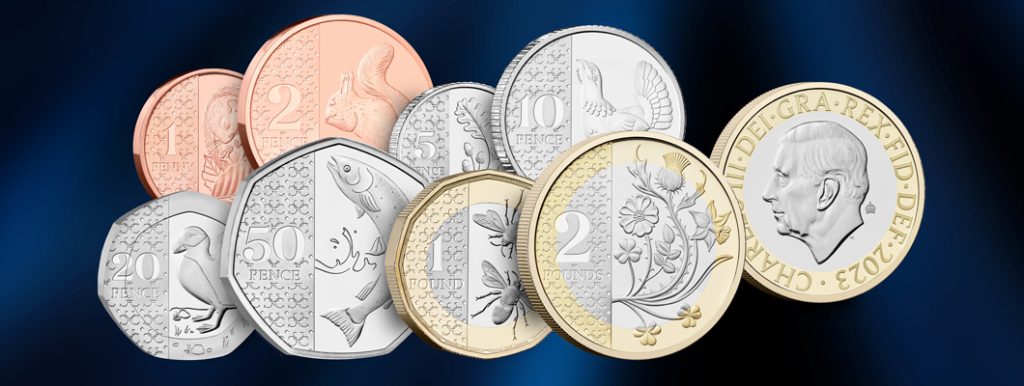
The Coins of a New ‘Carolean’ Era
The coins, each designed by The Royal Mint, have been authorised by HM treasury and approved by King Charles III himself.
Over the past seven decades, our circulating coinage has undergone many changes, showcasing five different portraits of Her Majesty Queen Elizabeth II on the obverse, and two distinct reverse designs.
And even though we have seen His Majesty’s effigy on the obverse of several commemorative issues, this will be the first time we’ll see his portrait on the coins we find in our everyday change.
All reverse designs share a unique feature, setting each denomination against a stylised logo with 3 interlocking ‘Cs’, representing King Charles III.
Before they gradually enter circulation, The Royal Mint have introduced the first strike of these coins in commemorative quality – with a special Privy Mark…
Inspired by Our Natural World
What’s more, each coin embodies King Charles III’s passion for nature & sustainability, presenting various symbols of Britain’s vast wildlife on the reverse designs. Having been a Patron of The Wildlife Trust since 1977, Charles’ affiliation for the natural world was a key inspiration for the designs of the UK’s new coinage.
The new £2 coin design represents the union of the United Kingdom with intermingling flowers from the four nations of the UK: the Rose, the Thistle, the Daffodil, and the Shamrock.
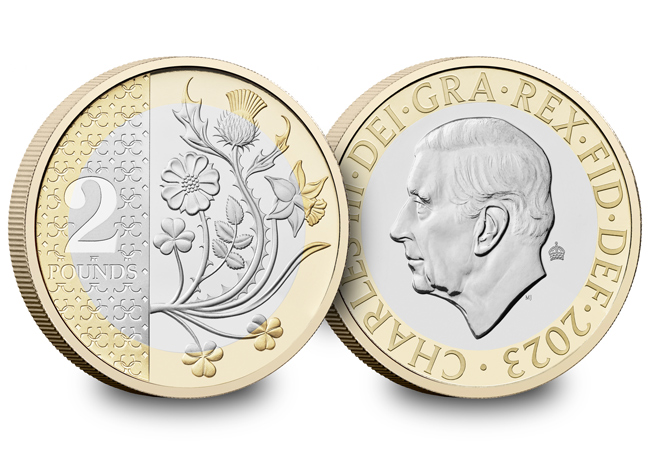
For the £1, 50p, 20p, 10p, 2p, and 1p, The Royal Mint have thoughtfully translated various wildlife creatures into innovative reverse designs.
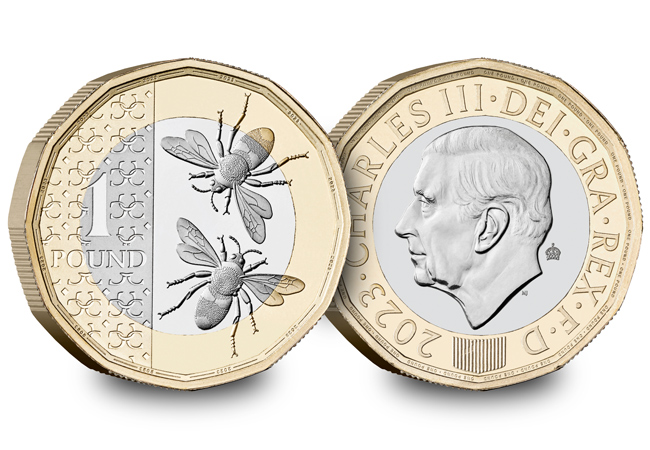
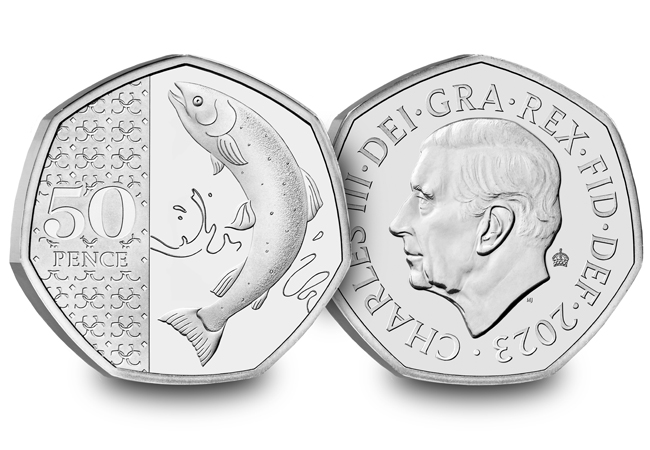
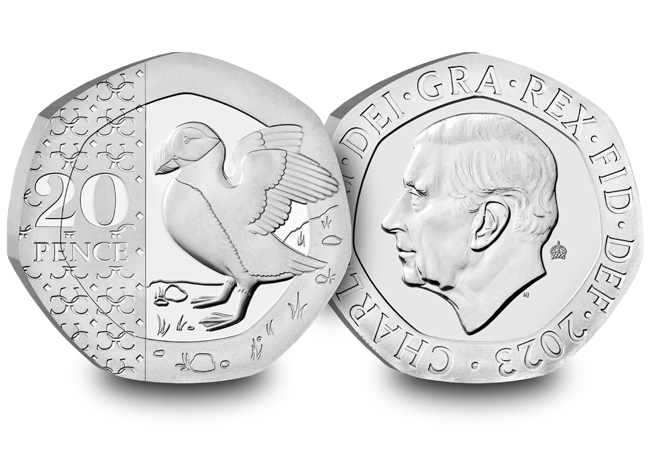
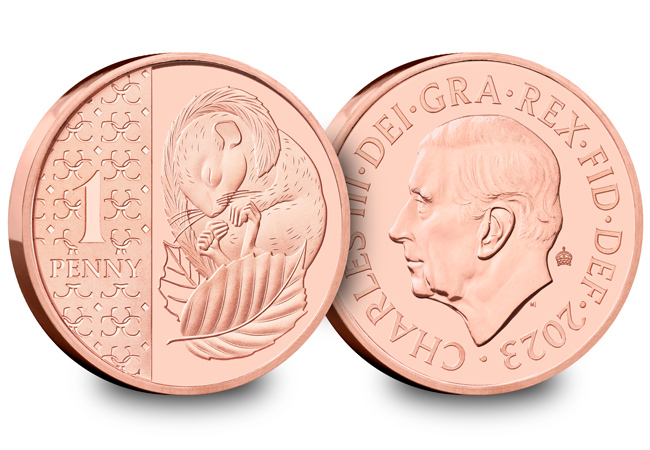
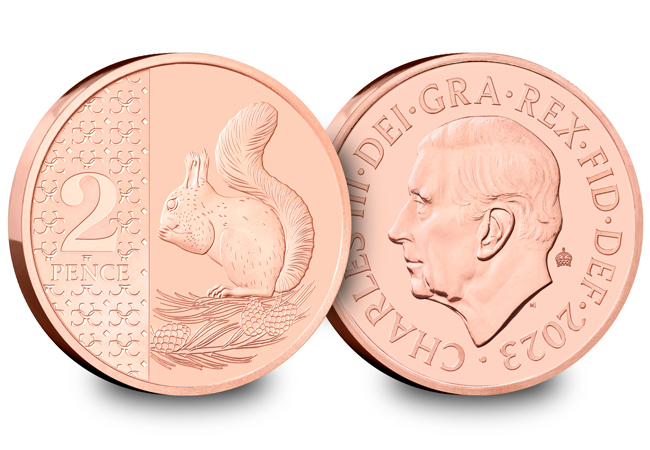
For example, the £1 coin presents a pair of Bees, the 50p showcases a Salmon in water, the 20p a Puffin, the 10p a Scottish Capercaillie, 2p a Red Squirrel, and the 1p a sleeping Dormouse.
Finally, the 5p coin features a stunning combination of oak leaves and acorns – a perfect tribute to our natural world and England’s national tree.
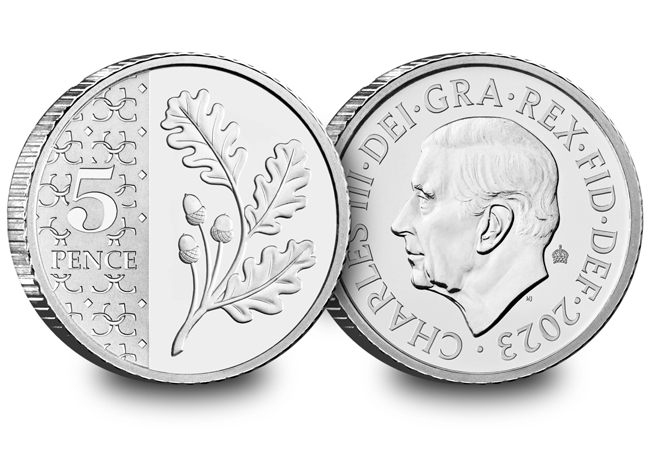
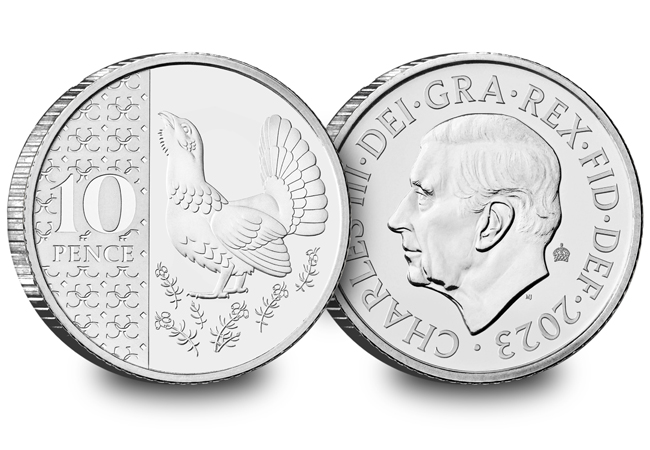
The History of ‘Definitive’ Coinage
The eight different coin denominations which make up our everyday change (1p, 2p, 5p, 10p, 20p, 50p, £1, £2) began circulating in 1971. This followed Britain’s shift towards Decimalisation, a plan which had been in the making for over 10 years.
Multiple artists participated in a private design competition, and among them was Christopher Ironside, the chosen designer of the decimal coins. Ironside’s designs remained on the reverse of the definitive coins for 40 years, until Matt Dent proposed the idea of spreading the Shield of the Royal Arms over the definitive coins in 2005.
“This piecing together of the elements of the Royal Arms to form one design had a satisfying symbolism – that of unity, four countries of Britain under a single monarch.” – Matt Dent
A Special Touch for Collectors…
The best part is, you can now secure the commemorative editions of the UK’s new coinage.
And in addition to new designs on both faces, these coins also feature a distinctive ‘Privy Mark’ on the obverse, a unique and sought-after element.
Designed to distinguish these coins from the ones you’ll eventually find in circulation, the first commemorative strikes display a delicate crown positioned alongside the effigy of His Majesty.
From the official Brilliant Uncirculated pack, to the prestigious Proof Set, or the strictly limited DateStampTM, you can click here to view the range with prices starting from £33 (+p&p) and secure yours before it’s too late >
Will our Penny be next?
Last week Canada became the latest country to bid farewell to its penny or 1 cent coin. Australia, Brazil and Sweden have already ditched theirs – the question is will the UK be next?
With over 11 billion in circulation according to latest Royal Mint figures, the humble penny accounts for nearly 40% of all Britain’s circulating coins. It is in fact our most common coin but when it costs more than a penny to make a penny, surely its days must be numbered?
Opinion is divided
Those in favour of getting rid of it say you can’t buy anything for a penny these days. True – the penny chews of my youth have now gone from our sweet shops. You can’t even ‘spend a penny’ anymore (that’ll cost you as much as 30p for the privilege). Put simply, 1p coins have no other function but to weigh down our purses and pockets.
But, in these tough times, every penny counts. Those against the move say there are plenty of people that still need the 1p and other small denomination coins. How many of us pop our loose change in charity collecting boxes when we’re out and about? They may be small amounts but they all add up.
A future collector’s item?
So it is probably fair to say that keeping hold of your old pennies is unlikely to make you rich. However, when they do finally disappear from our change (as is almost certain at some point), they are certain to remain an important part of Britain’s numismatic heritage for centuries to come.
Penny for them
Ultimately the “Master of the Mint” Chancellor George Osborne will make the final decision but what are your thoughts – should the penny stay or go?

